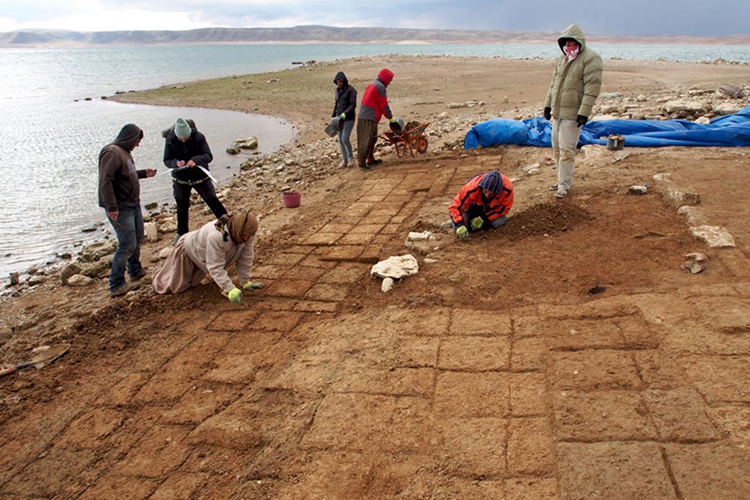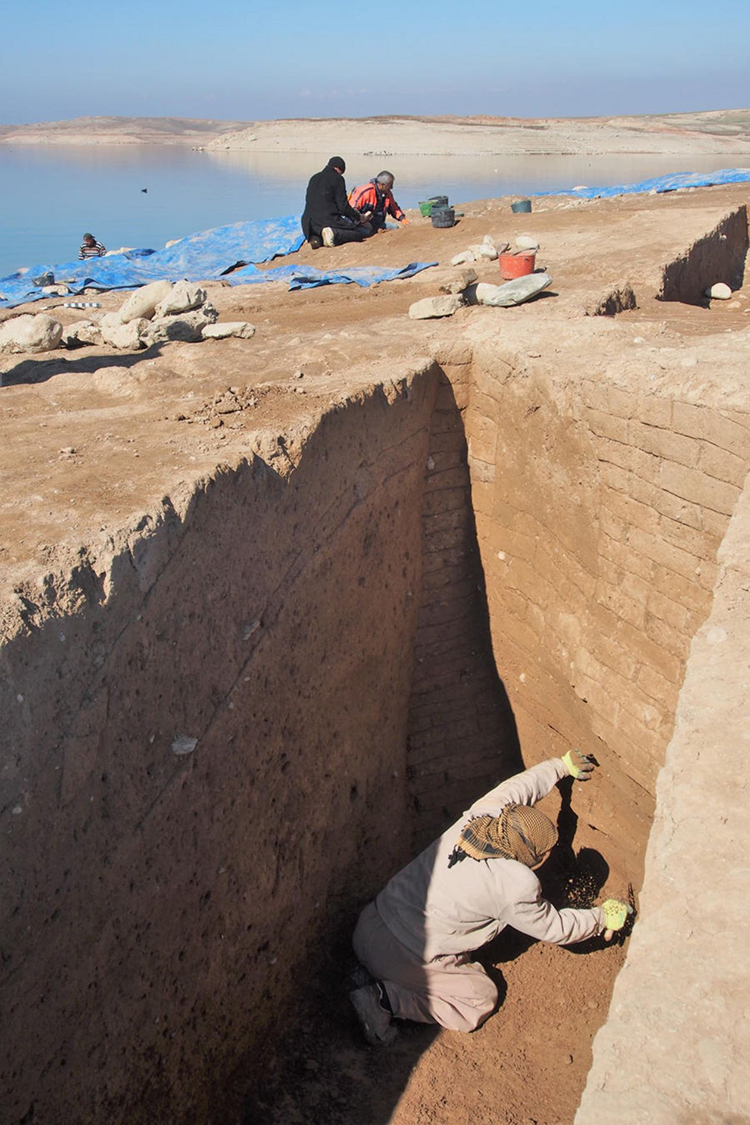
The receding Tigris has exposed the ruins of an ancient city, a site known as Kemune. (Photo: Universities of Freiburg and Tübingen, KAO)
Thousands of years ago, the Tigris and Euphrates Rivers gave birth to some of the earliest civilizations. The rivers created a region known as the Fertile Crescent, where flourishing trade routes, rich agriculture, and magnificent cities abounded. Today, these ancient Mesopotamian ruins are found in Iraq, Iran, and other Near Eastern nations. These places are now experiencing harsh drought, particularly as climate change raises regional temperatures. In Iraq, the retreating waters of the Tigris have exposed history and revealed a 3,400-year-old palace complex from the Bronze Age Mittani Empire.
The Mitanni Empire was a powerful civilization in northern Mesopotamia. They dominated the region from 1500 to about 1360 BCE before falling to the Hittite Empire, then later to the Assyrians. Mitanni were powerful players. They wrote on cuneiform tablets, corresponded with Egyptian pharaohs, and built large palaces. One ancient center on the banks of the Tigris was called Zakhiku.
This city has possibly reemerged. The Tigris was dammed in the 1980s to create a reservoir to supply downriver towns in Iraq in times of need and to provide electricity. The flooding of the Mosul Dam area covered the ancient ruins of a palace that had long lay dormant. Occasionally, water usage lowers the reservoir and exposes the ruins again. In 2018, a brief exposure allowed researchers to document the magnificent palace at the site. Therefore, when in January and February 2022 drought once more lowered the water level in the reservoir, archeologists knew they had no time to waste.
Kurdish archaeologist Dr. Hasan Ahmed Qasim, chairman of the Kurdistan Archaeology Organization, with German archaeologists Dr. Ivana Puljiz (University of Freiburg) and Dr. Peter Pfälzner (University of Tübingen), rushed to the site with emergency funding from the Fritz Thyssen Foundation and in collaboration with the Directorate of Antiquities and Heritage in Duhok.
The researchers quickly mapped the site, which is known as Kemune. They excavated a massive fortification with walls and towers, a multi-story storage building, and an industrial complex. “The huge magazine building is of particular importance because enormous quantities of goods must have been stored in it, probably brought from all over the region,” said Dr. Puljiz in a statement. Dr. Qasim added, “The excavation results show that the site was an important center in the Mittani Empire.”
The team noted the remarkably well-preserved state of the ruins. Made of baked mud brick, they were able to survive 40 years mostly underwater. Unfired clay tablets with cuneiform were even discovered in clay vessels. Some are still enclosed in clay envelopes as they would have been sent to a recipient. The tablets are Middle Assyrian, therefore they date after an earthquake largely destroyed the city around 1350 BCE. They may shed further light on the transfer of power between successive empires in the region.
The water has already risen as the reservoir refills, and the city has been flooded once more. Thankfully, the researchers were able to cover excavated areas with tight plastic and gravel fill to protect their discoveries. The 3,400-year-old city is an important part of Iraqi and world history. Its periodic reappearance may continue to add to scholarly knowledge about the site and the Mittani Empire.
In Iraq, the retreating waters of the Tigris River have exposed history, revealing a 3,400-year-old palace complex from the Bronze Age Mittani Empire.
The Mittani Empire was a regional power in ancient Mesopotamia.
The team found a palace, storage buildings, and even written cuneiform correspondence.
The city is once more underwater, but researchers protected the excavated areas.
The team may learn more from the Assyrian letters discovered.
h/t: [Science Alert, Interesting Engineering]
Related Articles:
Archaeologists Undercover Ancient Military Barracks While Building Metro Station in Rome
Long-Lost Shipwreck Has Been Discovered 107 Years Later in the Antarctic
Bronze Age Couple Discovered in Loving Embrace 3,000 Years After Burial in Ukraine
Medieval Human-Shaped Lead Sarcophagus and More Found Under Notre-Dame Cathedral





